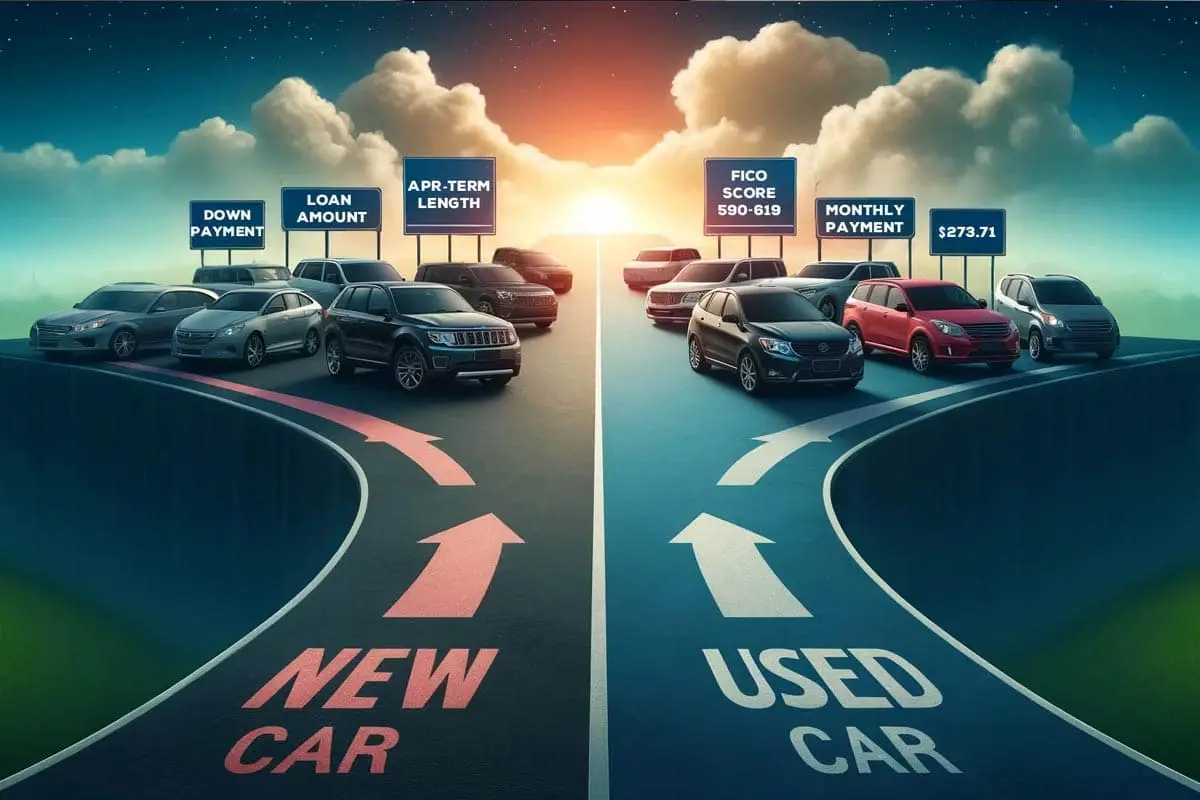The moment a customer clicks the buy button in one part of the world, a delicate dance begins in another.
Someone in a warehouse is notified about the order. They issue a packing slip and hand it off to a picker. The picker locates the ordered item and brings it to the packing station. Packers box and label the item and put it on a truck.
Customers expect that package to arrive on their doorstep — undamaged — within days, if not hours. And if that customer isn’t satisfied, you have to make like Ginger Rogers and do that whole dance backward (high heels optional).
That’s a lot for many ecommerce small business owners to choreograph on their own. That’s why so many turn to Fulfillment by Amazon (or FBA). After all, many of them are already selling on the world’s largest ecommerce site, so it makes sense to let Jeff Bezos and his logistics geniuses handle the details.
To understand whether the pros and cons of FBA shake out in their favor, ecommerce businesses must assess the scale, profitability and amount of personalization their business model demands.
What is Fulfillment by Amazon?
Fulfillment by Amazon is the ecommerce giant’s in-house third-party logistics business. Sellers use third-party logistics (or 3PL) to handle the receiving, storing, picking, packing and shipping of their products. FBA also handles most customer support functions and the returns process for sellers.
Sellers must ship their products to Amazon’s warehouses for receiving, and Amazon’s packing requirements are strict. Sellers must also manage inventory, although Amazon has dashboards that make the process easier.
Aside from those two duties, FBA makes it easier for sellers to offload much of the logistics of a product-based business, so they can focus on nurturing customer relationships, building their brand and improving their products.
Pros of FBA
A Jungle Scout survey of 3,500 small- to medium-sized ecommerce business owners showed that 89 percent of existing Amazon sellers use FBA. And since 72 percent of all Amazon sellers think Amazon is a good platform for their business, it’s safe to say most of those users are satisfied with the results.
Here are just some of the reasons Amazon sellers sing the praises of FBA.
Amazon draws a massive audience
Absolutely no one on the planet can compete with Amazon for sheer traffic volume.
Nearly two-thirds of consumers begin their product search directly on Amazon. In May 2022 alone, Amazon drew 2.4 billion visitors, according to Statista.
If you want to sell to the masses, it makes sense to use the platform where the masses already spend their time. And as we’ll show you, Amazon is more inclined to put your product in front of all those eyeballs if you participate in its FBA platform.
Rely on the efficiency of a logistics empire
Once you’re shipping more volume than you can handle in your garage, warehousing and shipping become more complicated. FBA handles those details, so you can focus on marketing, sales and product development.
If you don’t have a sophisticated inventory management system, you may be storing too much or too little product in the warehouse. Too much, and your storage costs eat into your profits. Too little, and you’ll frustrate customers with out-of-stock messages. FBA provides users with a sophisticated dashboard with all the information they need to balance their inventory.
Errors in packaging can lead to higher shipping costs if you use too much material, but products may arrive damaged if you use too little. Amazon has spent more than two decades perfecting the art of shipping.
It also has an effective, customer-friendly returns system, so you can minimize your conversations with buyers and leave the challenges of inspecting returned items, restocking them and refunding buyers or replacing their orders to Amazon.
Automatic Prime
When you fulfill with Amazon FBA, your items automatically qualify for Amazon Prime shipping, so all Prime members can get free two-day shipping for your products. Those in certain metropolitan areas can get products delivered the same day.
Retail Management Institute surveyed nearly 2,500 monthly ecommerce consumers in 2022 and found that 28 percent of shoppers abandoned items in their cart because free shipping wouldn’t get the product to them fast enough.
What’s more, you don’t have to pay anything more as a Prime seller – you’ll be charged the same rate, regardless of whether or not your customer ordered via Prime or regular shipping.
Buy box priority
Sellers using FBA are higher up in the “buy box,” which is the big box on the right-hand side of the product screen where buyers can add the item to their cart or choose to buy now.
Winning the buy box increases visibility for your product, which drives more sales. And buyers who have had positive experiences with Amazon’s fast, accurate shipping are more likely to trust sellers who have that FBA badge.
Cons of FBA
Placing your warehousing, shipping and returns workflow in the hands of a third party can provide peace of mind, but it also results in less control and, in some cases, steeper costs.
Amazon punishes poor inventory management
Like any other warehouse operation, if you have hundreds, if not thousands, of products in Amazon FBA, it’s highly likely that not all of them will sell. Amazon charges you a premium called the “aged inventory surcharge” for products that haven’t moved in nine months.
Amazon also has an “Inventory Performance Index” that measures your performance based on things like excess inventory, stranded inventory and sell-through rates. Fall below a minimum score of 500, and Amazon will charge you higher rates and limit how much product you can store at its warehouses and fulfillment centers.
Stickerless inventory can put your reputation at risk
Due to the sheer quantity of products (and sellers) in Amazon’s warehouses, not every merchant gets their own bin location for every product. Quite often, your inventory will be pooled with the same products from other sellers.
This is generally not that big of a deal, but what it means is that the physical product your customer actually receives may not be the exact one you sent to Amazon. It may be one from another seller.
Your account could be erroneously suspended if that seller’s item is of poorer quality. For instance, it may be used, or they may have packed the product for receiving poorly, so now it’s damaged. In some cases, the item may even be a counterfeit.
Amazon’s receiving requirements are onerous
Amazon has a very strict ASIN/UPC system, and you have to label each and every one of your products individually, pack them up into multiple, properly sized shipments (that go to Amazon’s multiple warehouses), label them appropriately and send them off.
So one shipment to FBA will actually be three or four shipments, which will also add to your bottom line costs.
Amazon does offer a service where it will label the products for you at a cost, so that may be worth considering as you are starting out.
Costs can be prohibitive for larger items
FBA’s storage pricing is designed to favor small, light items. That makes sense for Amazon’s business because it keeps costs down. However, if you sell e-bikes or other large items, that can cut into your margins.
Fortunately, Amazon has a detailed calculator, so you can see upfront whether FBA will be cost-effective for a given product. To make an accurate comparison, you’ll need detailed information about your current storage and shipping costs, the size and weight of the product and your inventory turnover. If you aren’t using a different warehousing and fulfillment process right now, you’ll need estimates from competitors to make the best use of the calculator.
No opportunity for branding and customization
When you sell on Amazon, you’re building brand equity for Amazon, not your own company.
It’s Amazon’s list of product recommendations buyers see, which may not include your products and therefore limits cross-sell and upsell opportunities. It’s Amazon’s branding customers see when they click buy. Then your product arrives in an Amazon box. You don’t have an opportunity to include any kind of collateral like brochures or coupons that might encourage your new customers to buy complementary products or check out your website for the latest sale.
FBA also limits your opportunities to beat competitors through personalized service and customized products. For example, buyers can’t order mugs with their names on them or ask for a computer to arrive with their preferred settings, software and components.
You cede control to Amazon
One of FBA’s benefits can also be one of its greatest drawbacks; it handles everything about warehousing and shipping, but that leaves you without a say in decisions that affect your business.
For example, Amazon clamped down in 2020 on how much inventory sellers could store in their warehouses and fulfillment centers. Then, in Jan. 2022, the company raised its storage prices.
If you handled warehousing and shipping yourself, those cost increases would be within your control. Or, if you worked with a different logistics company, there would be opportunities to develop a relationship with that company and potentially negotiate different pricing structures. Not so with Amazon.
Jungle Scout’s survey of Amazon sellers shows that 64 percent of sellers have major concerns about the rising costs of shipping and storage at Amazon.
Costs aren’t the only area you have to be concerned about as a seller married to FBA. That same survey found that 69 percent of sellers are worried Amazon will limit or shut down their accounts without warning or a legitimate reason.
Another area where Amazon limits your control is branding.
The types of ecommerce businesses that should (and shouldn’t) consider FBA
There’s rarely one right answer for every situation, and that’s the case when weighing whether to use Fulfillment by Amazon.
There are some general factors about your business model that should influence your decision on whether FBA is right for you or not.
For example, if you create handcrafted goods and rely on developing personalized customer relationships, FBA may not be as strong of a fit for you as it would be for a private label seller buying products in bulk.
It’s also important to consider the size and weight of your product and how quickly you turn over inventory. If you sell small commodity goods like sports nutrition bars, FBA may work great. If you’re selling Christmas trees, you may end up paying more in aged inventory surcharges than it’s worth.
Another option is to use a blend of FBA and another storage and fulfillment option. For example, you could sell bicycle accessories like lights and helmets through FBA but find a different storage option for your bicycle inventory since bikes are large, and they may not sell as quickly.
Learn how to streamline your logistics process
Flashy branding and stellar product development may get most of the attention when it comes to delivering a memorable customer experience, but fast, accurate delivery can be just as important for developing a loyal following.
Once you’ve chosen the route that’s best for your warehousing and shipping needs, the work isn’t over. Read on to learn how to continually evaluate and streamline logistics.




/cdn.vox-cdn.com/uploads/chorus_image/image/62810996/Amm_DeepSentinel_01.0.jpg)

More Stories
Make It A Movie Night with Walmart+
Teacher-led vs student-led lesson activities – David Didau
Links + Before + After Photos of My Brothers Bedroom Makeover!